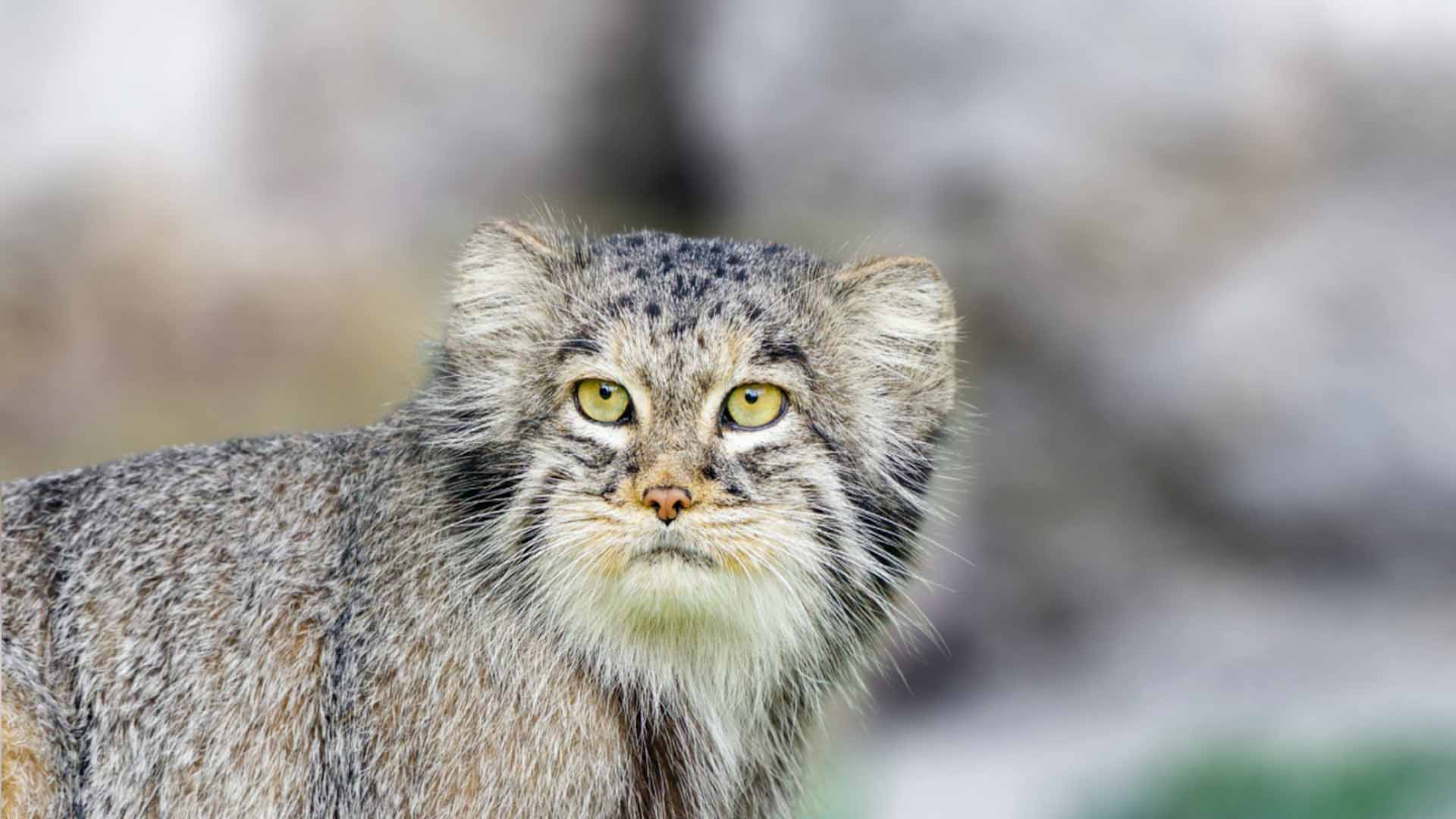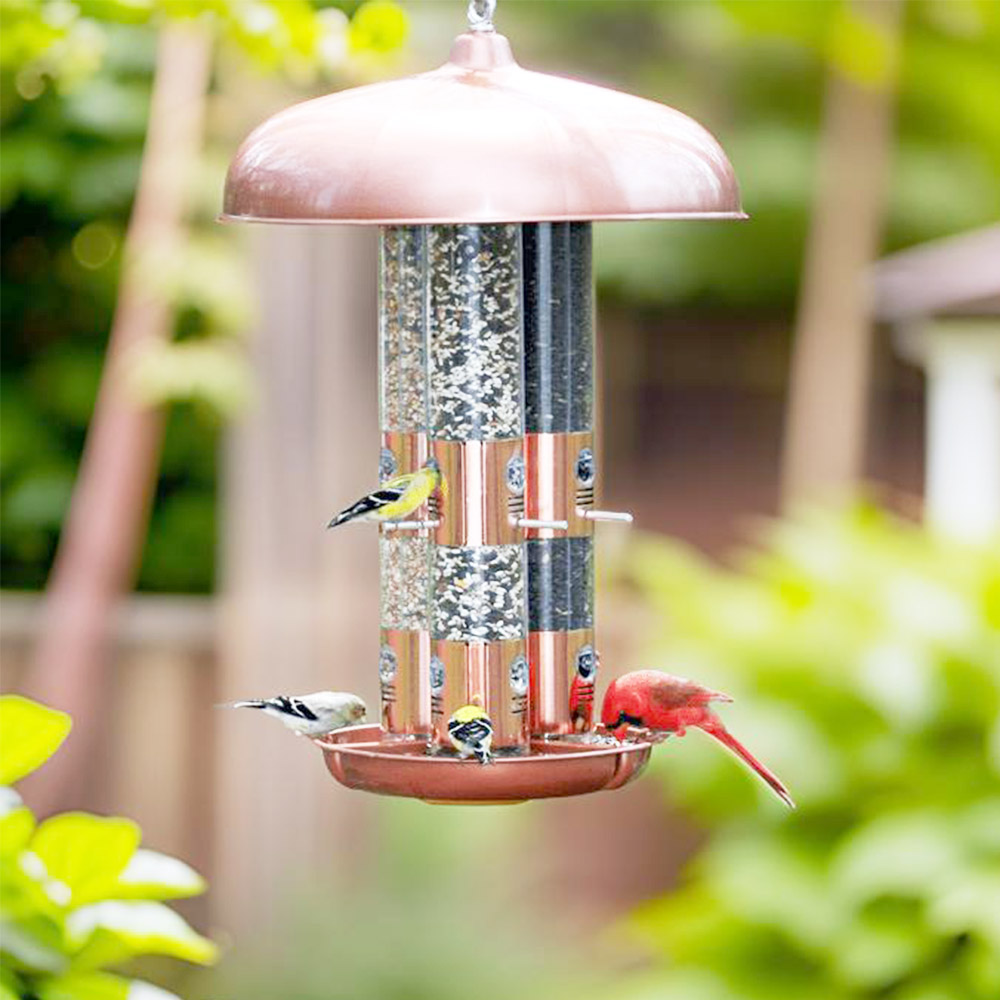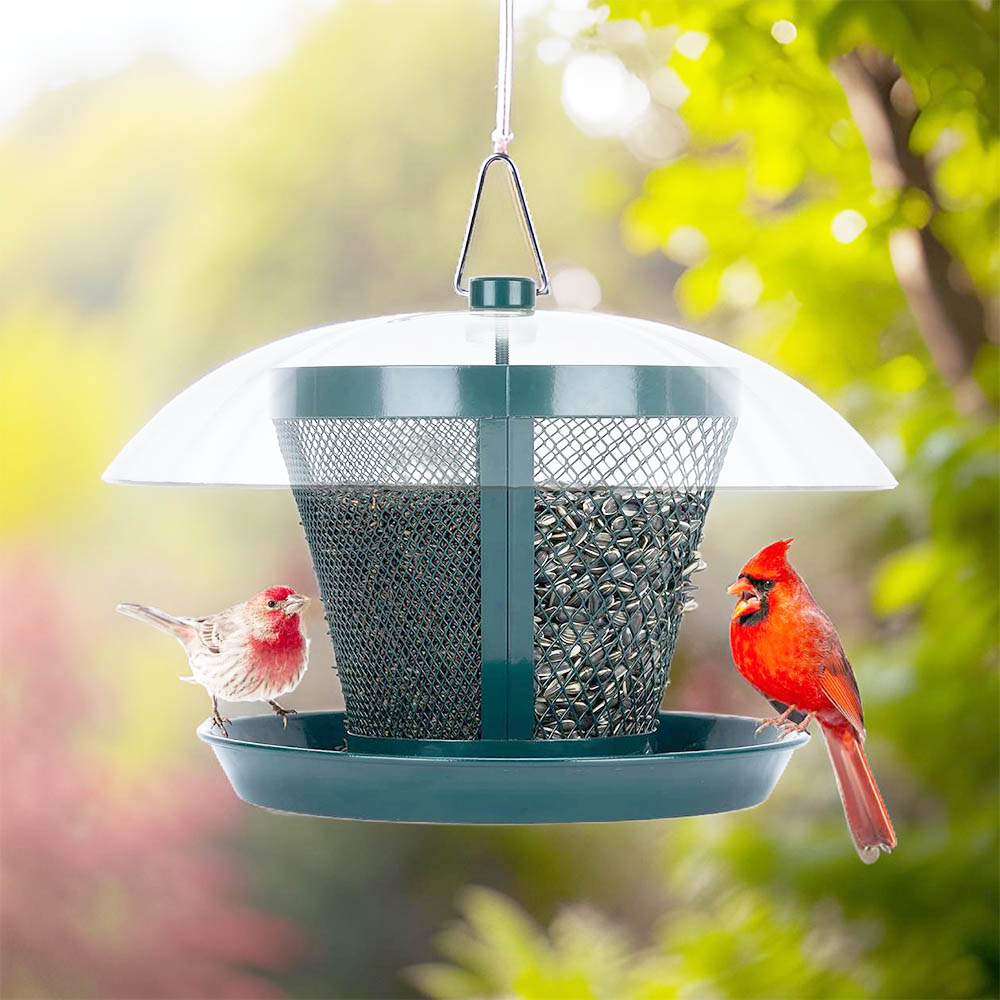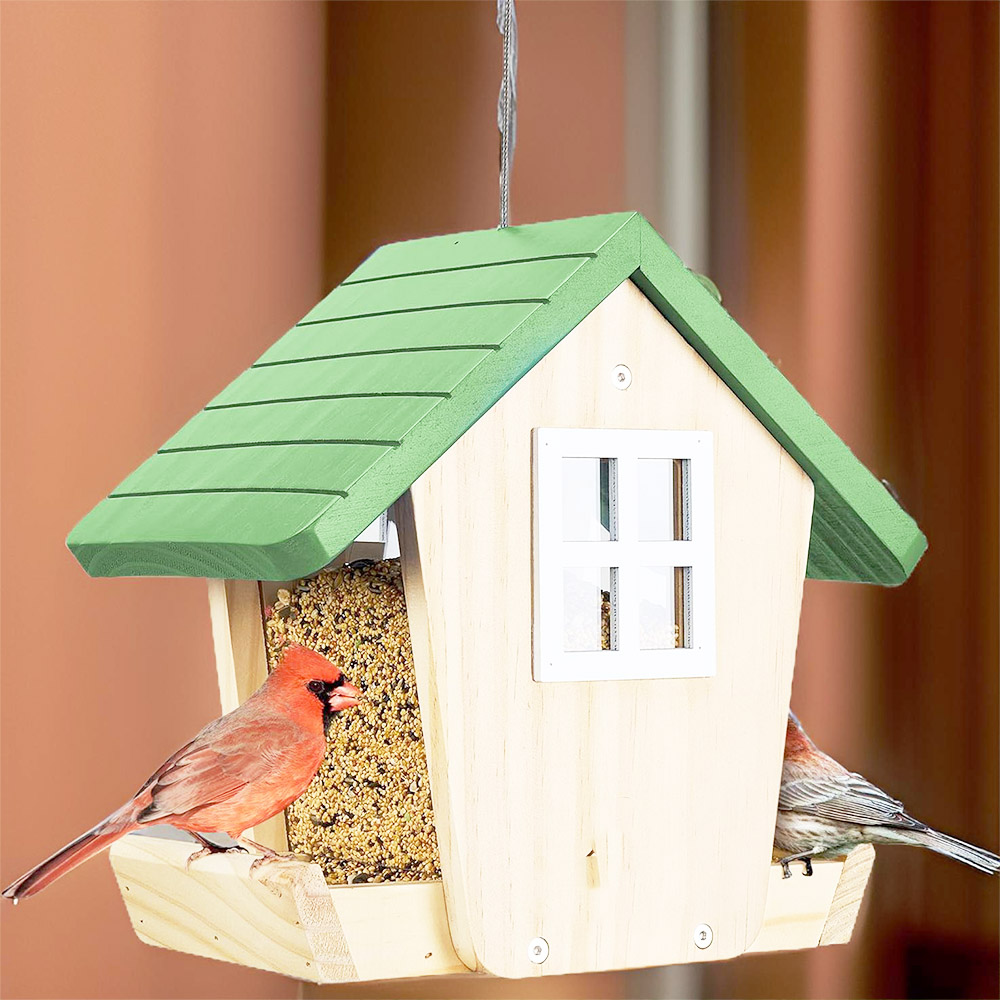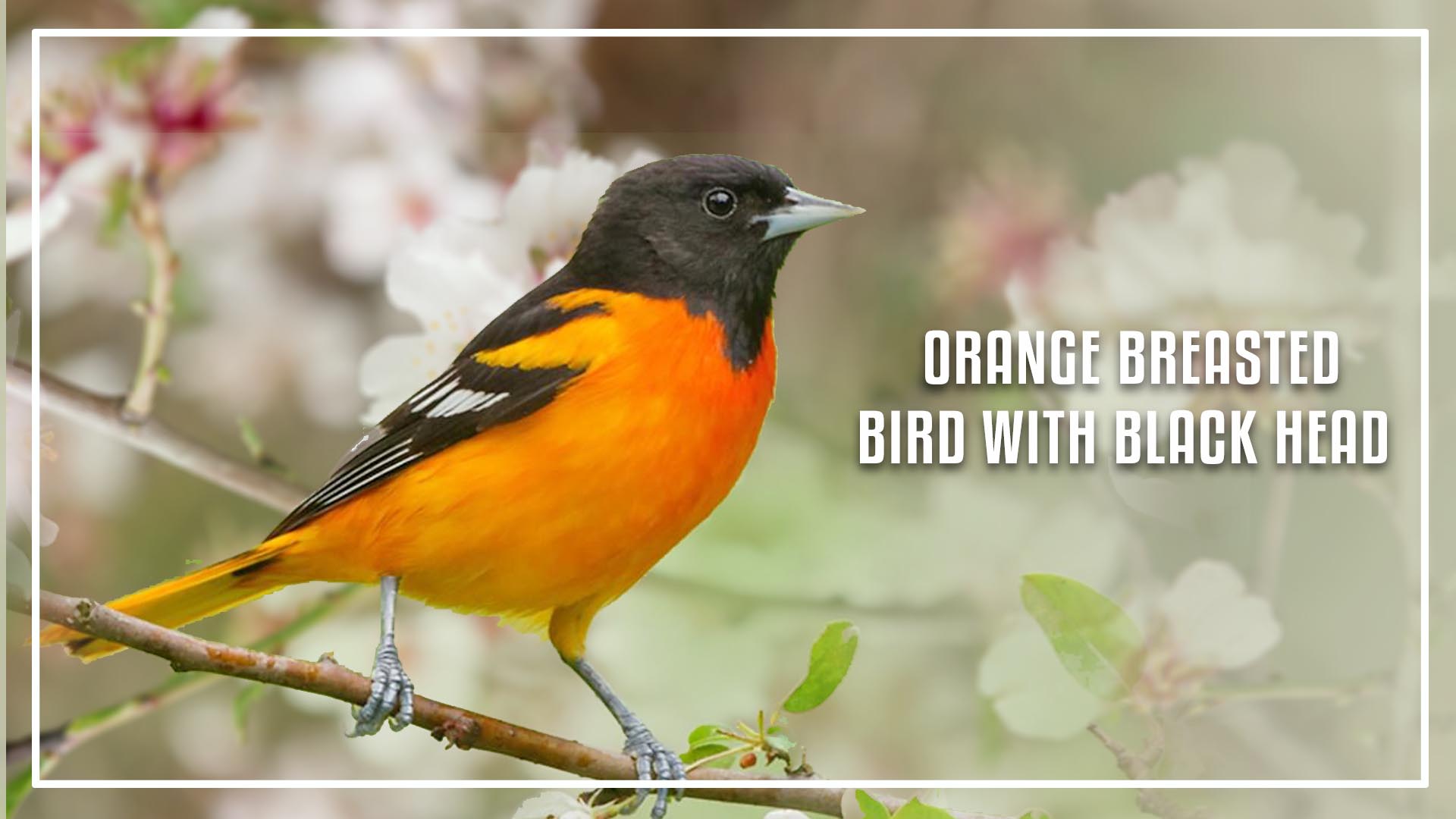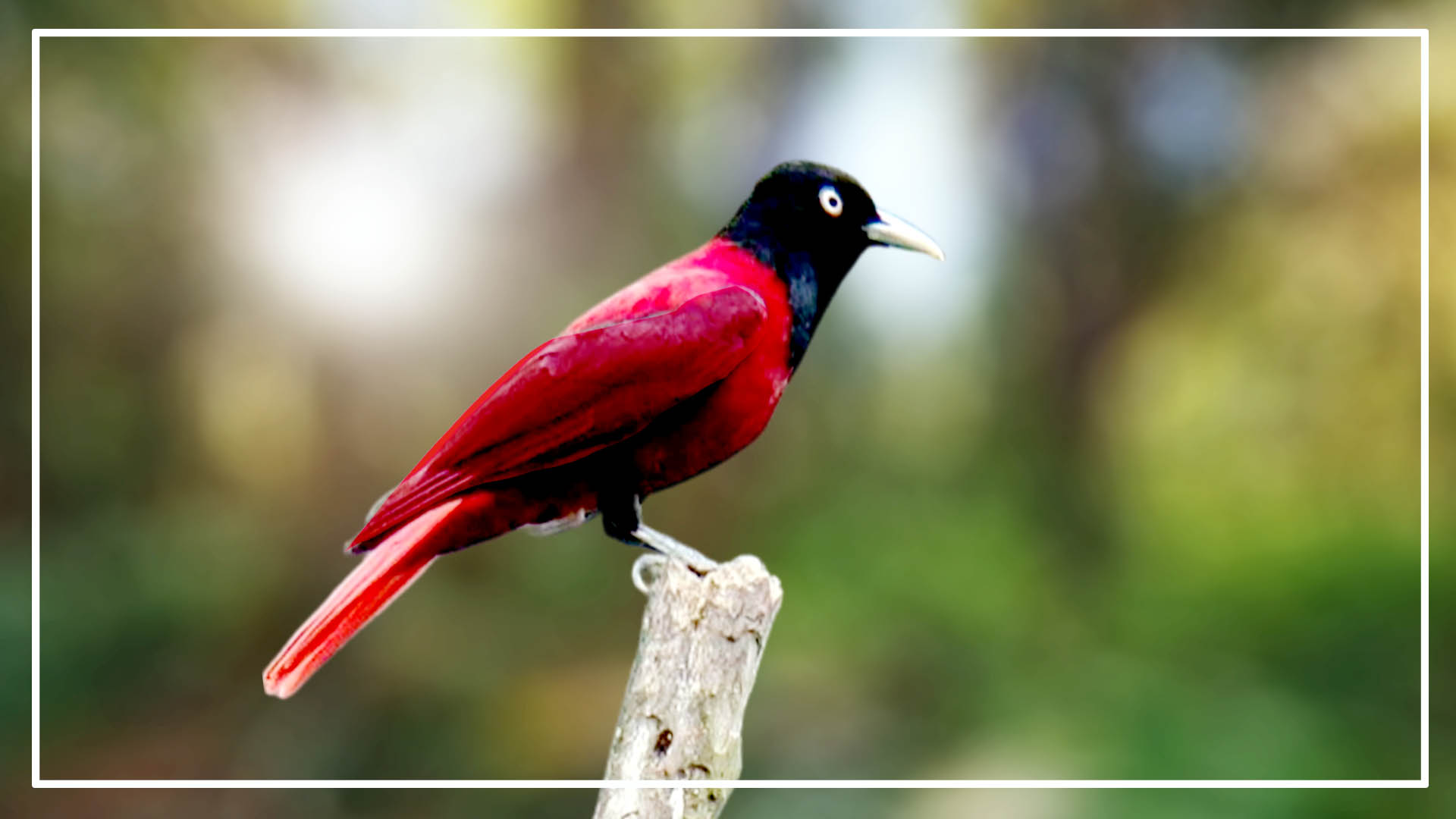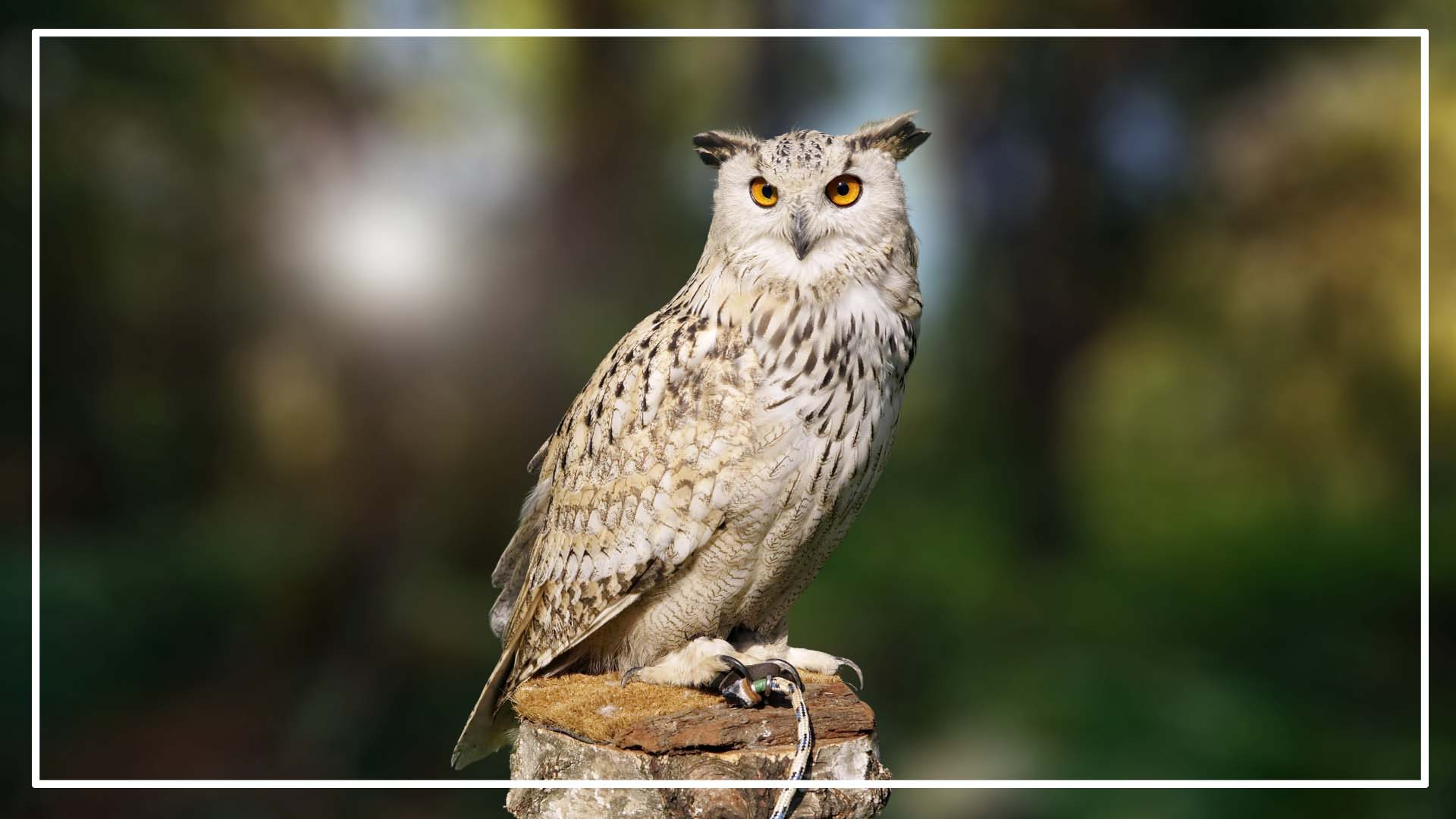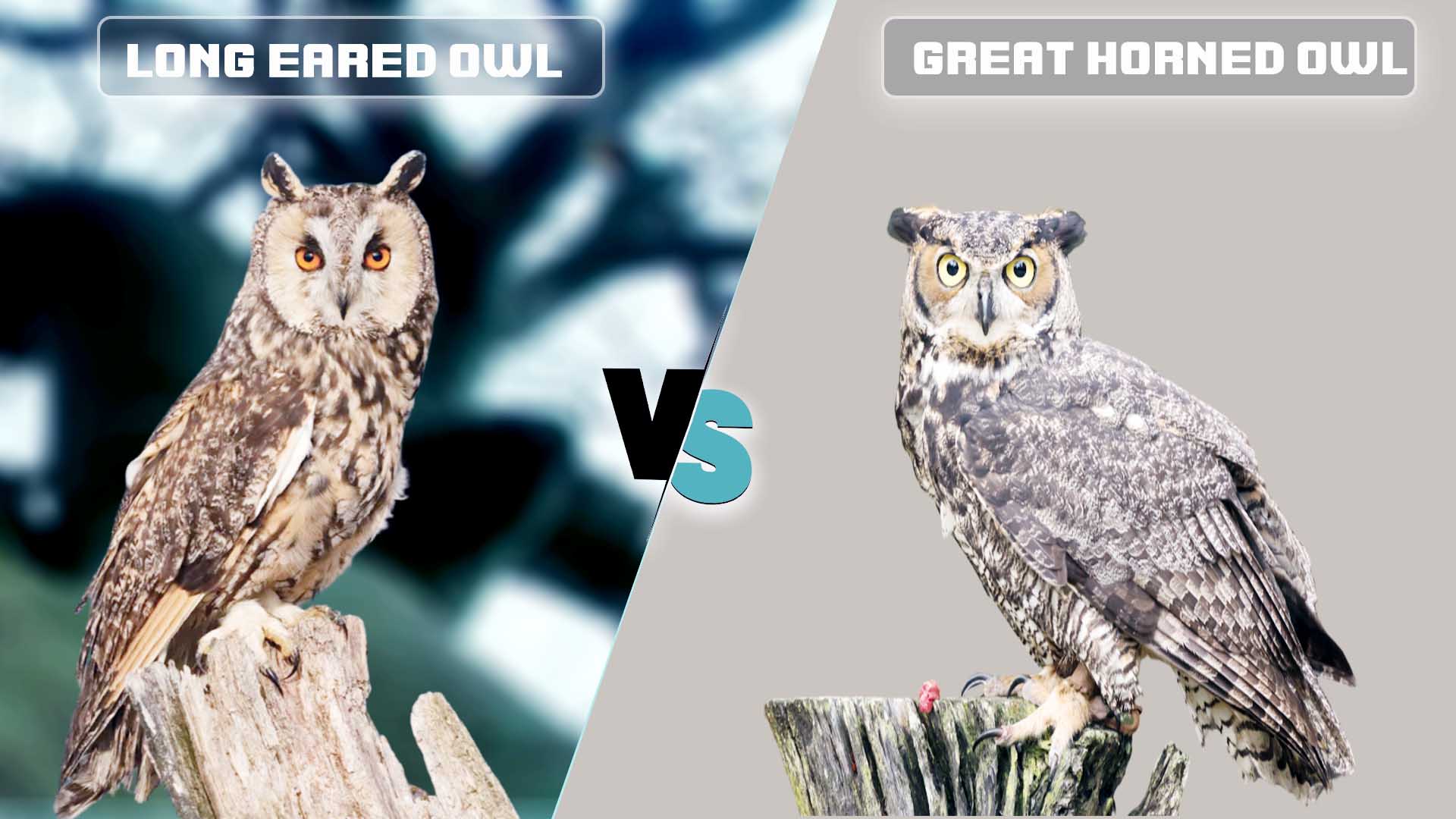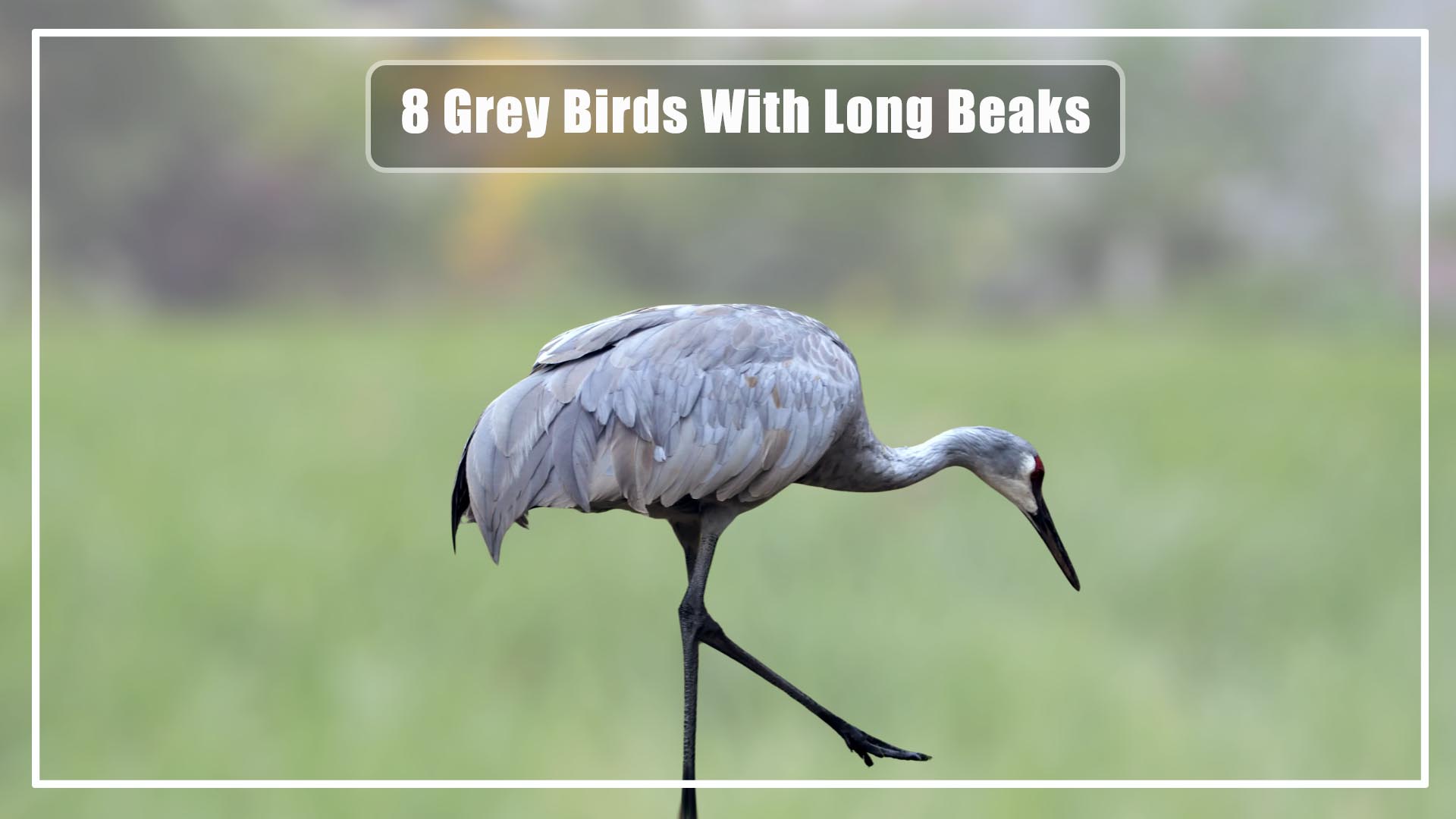Orange and black combination birds are really so nice. Especially, orange-breasted birds. Here we shared 10 beautiful orange-breasted birds which have black heads.
Typically, Black head birds have the orange, white, and grey chest. In this post, we only discussed orange-breasted birds with black heads.
You can learn about those bird color patterns, sizes and food habits. Let’s get started.
American Robin

The upperparts of the American Robin are a dark grayish-brown, while the head and neck are black with white eye arcs. It has an orange chest and black head.
The breast is bright rust-red, while the belly and undertail coverts are white. The wings are dark with white patches and the tail is dark with white tips.
Juvenile American Robins have a speckled appearance on their breast and belly, and their colors are less distinct than adults.
The American Robin is a medium-sized songbird, measuring about 9 to 11 inches (23 to 28 centimetres) in length from its beak to the tip of its tail. Its wingspan typically ranges from 12 to 16 inches (30 to 41 centimetres).
The American Robin is an omnivorous bird that feeds on a variety of foods. In the spring and summer, the American Robin’s diet consists mainly of insects, such as beetles, caterpillars, and grasshoppers
. They also eat earthworms, snails, and other small invertebrates. During the fall and winter, when insects are less abundant, they switch to a diet of fruit, including berries, cherries, and grapes, as well as seeds and nuts.
Black-headed Grosbeak
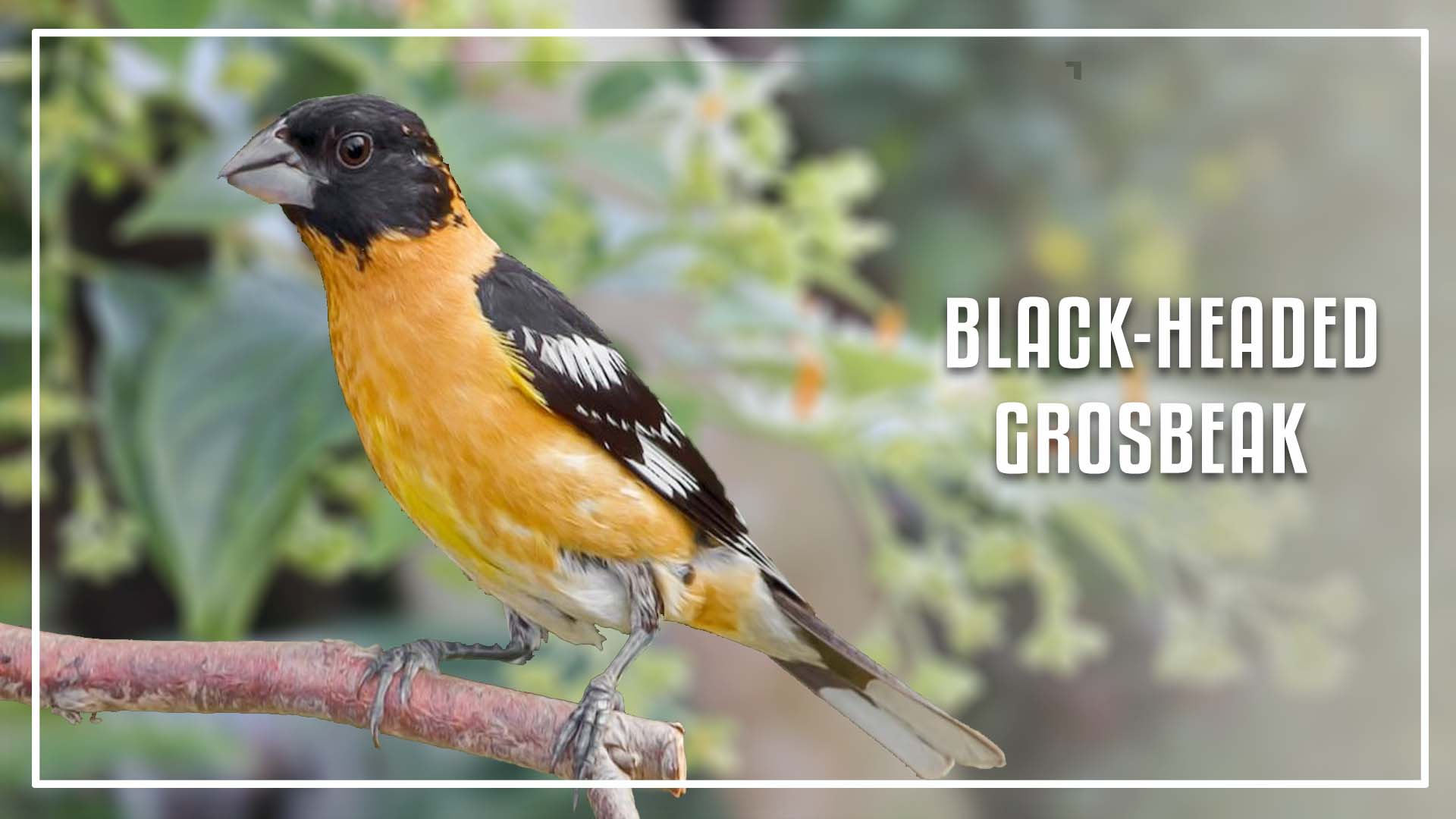
The male Black-headed Grosbeak has a striking colour pattern. Its head, throat, and upper breast are a deep, glossy black, while its back and wings are warm, cinnamon-brown.
The underparts are a light buff colour. The male also has a large, conical bill that is yellowish-orange in color.The female Black-headed Grosbeak is less colourful than the male.
Overall, Black-headed Grosbeaks are orange-breasted birds with black heads.
The Black-headed Grosbeak is a medium-sized bird, with a body length of approximately 7 to 8 inches (18 to 20 Centimeters ) and a wingspan of 11 to 12 inches (28 to 30 Centimeters ).
Both male and female grosbeaks are similar in size, with males typically weighing slightly more than females.
During the breeding season, the Black-headed Grosbeak’s diet consists mainly of insects and spiders, which provide protein for the birds and their young.
As the breeding season ends and the birds migrate to their wintering grounds, they switch to a diet of seeds and fruit.
Their diet includes a variety of seeds, including sunflower, thistle, and millet, as well as various fruits, such as cherries, grapes, and berries.
Bullock’s Oriole

The male Bullock’s Oriole has a striking color pattern. Its head, throat, and upper breast are a bright orange-yellow, while its back and wings are a warm, dark brownish-black.
The underparts are a lighter yellow color. The male also has black and white wings with white wing bars, and a long, pointed bill that is slightly curved downward.
The female Bullock’s Oriole has a similar color pattern, but with less black and more of a dull olive-brown color on its back and wings.
The female’s head, throat, and upper breast are a duller yellow-orange color than the male’s. It is a little bit orange chest with a black head.
The Bullock’s Oriole is a medium-sized bird, with a body length of approximately 7 to 8 inches (18 to 20 Centimeters ) and a wingspan of about 12 inches (30 Centimeters ).
Both male and female orioles are similar in size and weight.
During the breeding season, the Bullock’s Oriole primarily feeds on insects, including caterpillars, beetles, and grasshoppers, as well as spiders and other small invertebrates.
They catch these prey items by gleaning them from foliage or by hovering and catching them mid-air.
In addition to insects, they also consume nectar from flowers, and will occasionally eat fruit.
Orchard Oriole

The male Orchard Oriole has a striking color pattern, with a dark chestnut head and upperparts, and a bright reddish-orange breast and underparts. It is a better example of an orange chest birds with a black head.
The male also has black wings with white wing bars, and a relatively short, pointed bill.
During the non-breeding season, the male’s plumage becomes duller and more brownish, making it less conspicuous.
The female Orchard Oriole has a more subdued color pattern, with a yellowish-green head and upperparts, and a yellowish-orange breast and underparts.
The female also has black wings with white wing bars, and a relatively short, pointed bill. You may also be interest to know about Blue Birds With Orange Chests and Birds With An Orange Chest
The Orchard Oriole (Icterus spurius) is a small songbird, with a body length of approximately 6 to 7 inches (15 to 18 Centimeters ) and a wingspan of about 8 to 9 inches (20 to 23 Centimeters ). Both male and female Orchard Orioles are similar in size and weight.
The Orchard Oriole’s diet consists mainly of insects during the breeding season, including beetles, flies, caterpillars, and spiders.
They typically forage for insects in the upper branches of trees and shrubs, and they are also known to catch insects in mid-air.
Varied Thrush
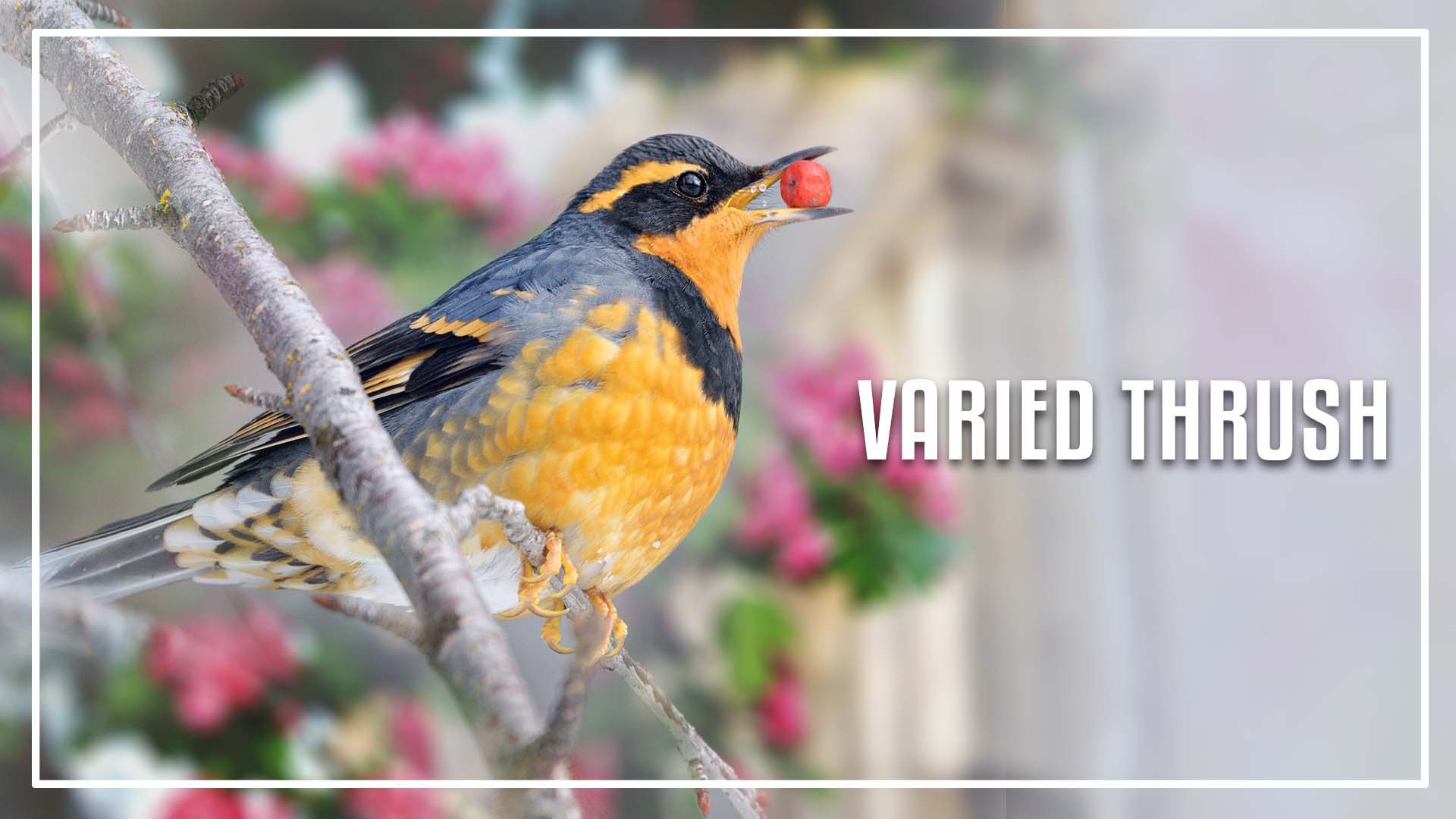
Varied Thrush has a orange-breasted with black head. The male Varied Thrush has a striking color pattern, with a bright orange breast, bold black-and-white striped throat, and a grayish-blue head and back.
The wings are black with white wing bars and orange-yellow shoulder patches.
The female Varied Thrush has a similar pattern but with less intense colors, with a brownish-gray head and back and less prominent markings on the breast and throat.
Both males and females have a sharp, black bill and bold white markings above the eyes.
The Varied Thrush is a medium-sized songbird, with an average body length of approximately 8 to 10 inches (20 to 25 Centimeters ) and a wingspan of about 13 to 15 inches (33 to 38 Centimeters ).
Both male and female Varied Thrushes are similar in size and weight, with males being slightly larger than females on average
The Varied Thrush’s diet consists mainly of insects and other invertebrates, as well as berries and fruits.
They forage for food on the ground and in the understory of forests, using their sharp bill to search for insects in the leaf litter and soil, and also to pluck fruits and berries from shrubs and trees.
True Redstart
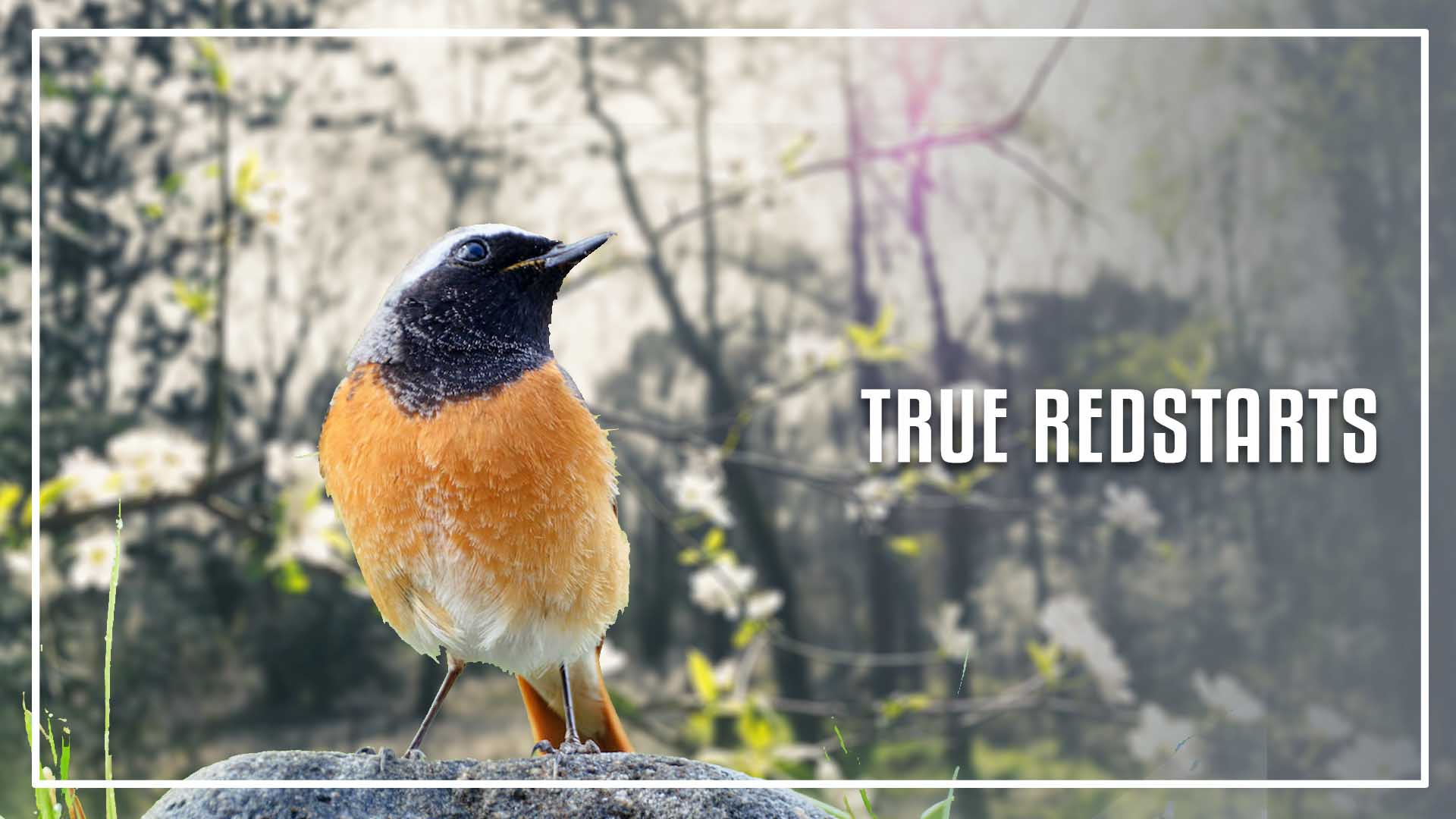
True Redstart has jet-black feathers with bright orange patches on its wings, tail, and sides.
The female, on the other hand, has olive-green feathers with yellow patches on their wings and tail.
True Restart feeds on a variety of insects, including caterpillars, moths, flies, and beetles, which it catches while foraging in trees and shrubs. During migration, they may also feed on fruit and nectar.
True Redstart nack and head black and breasted are orange.
Bullfinch
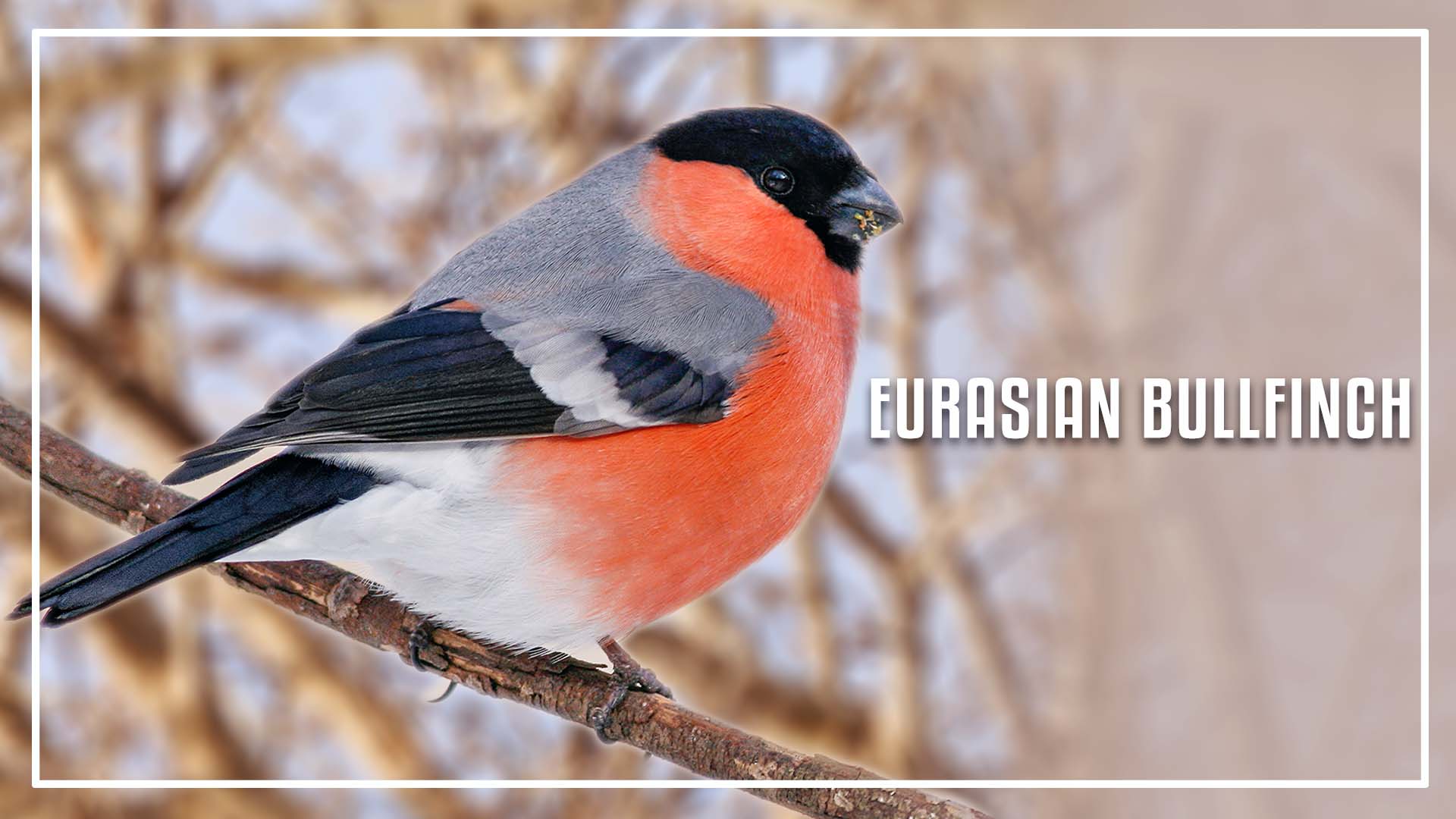
The Bullfinch has a very distinctive colour pattern, with the male having a bright pinkish-red breast, grey back, black cap, and white rump. It female breast little bit orange and head is black .
The wings are black with a white wing bar, and the tail is black with white markings
The Bullfinch is a medium-sized bird, with an average body length of approximately 5.5 to 6.5 inches (14 to 16.5 Centimeters ) and a wingspan of about 9 to 11 inches (23 to 28 Centimeters ).
The Bullfinch (Pyrrhula pyrrhula) is primarily a seed-eating bird, with a preference for tree buds and fruit seeds.
They feed on a variety of seeds, including those of birch, alder, spruce, and pine, as well as the seeds of wildflowers and weeds.
They are also known to feed on insects, especially during the breeding season when they need to provide their young with high-protein food.
The Blue-fronted Redstart
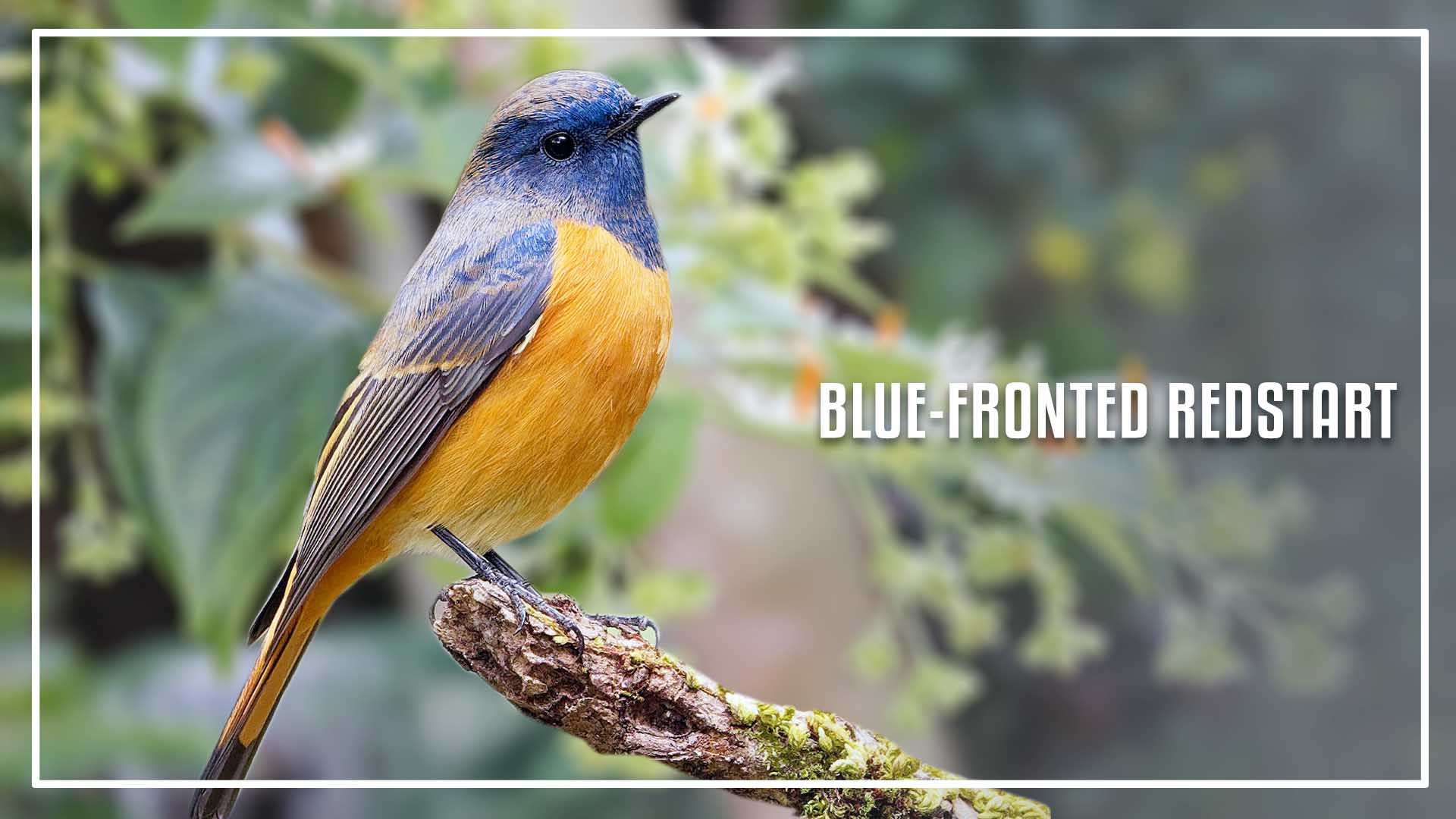
The Blue-fronted Redstart (Phoenicurus frontalis) is a small passerine bird found in the Himalayan region of South Asia.
Males have a striking colouration with a bright blue forehead, black face and throat, and rust-red breasts and flanks.
The upperparts are grey, and the wings and tail are black with white patches.
Females have a similar color pattern, but with less intense colors, with a brownish-gray head, a pale blue-gray forehead, and a pale rust-colored breast and flanks.
The Blue-fronted Redstart (Phoenicurus frontalis) is a small bird, measuring around 12.5-14 Centimeters (5-5.5 inches) in length from the tip of the beak to the tip of the tail.
Their wingspan is approximately 20-23 Centimeters (8-9 inches) and they weigh around 10-14 grams (0.35-0.5 ounces).
Like many passerine birds, there is little difference in size between males and females, although males may have slightly longer tails.
Hodgson’s Redstart

Hodgson’s Redstart is a small songbird found in the Himalayas and parts of Southeast Asia.
The male has a distinctive color pattern, with a bright blue forehead, a black face and throat, and a salmon-pink breast and flanks.
The upperparts are gray, and the wings and tail are black with white patches.
around 13-14 Centimeters (5-5.5 inches) in length from the tip of the beak to the tip of the tail.
Their wingspan is approximately 20-22 Centimeters (8-9 inches) and they weigh around 12-15 grams (0.4-0.5 ounces).
Common Redstart
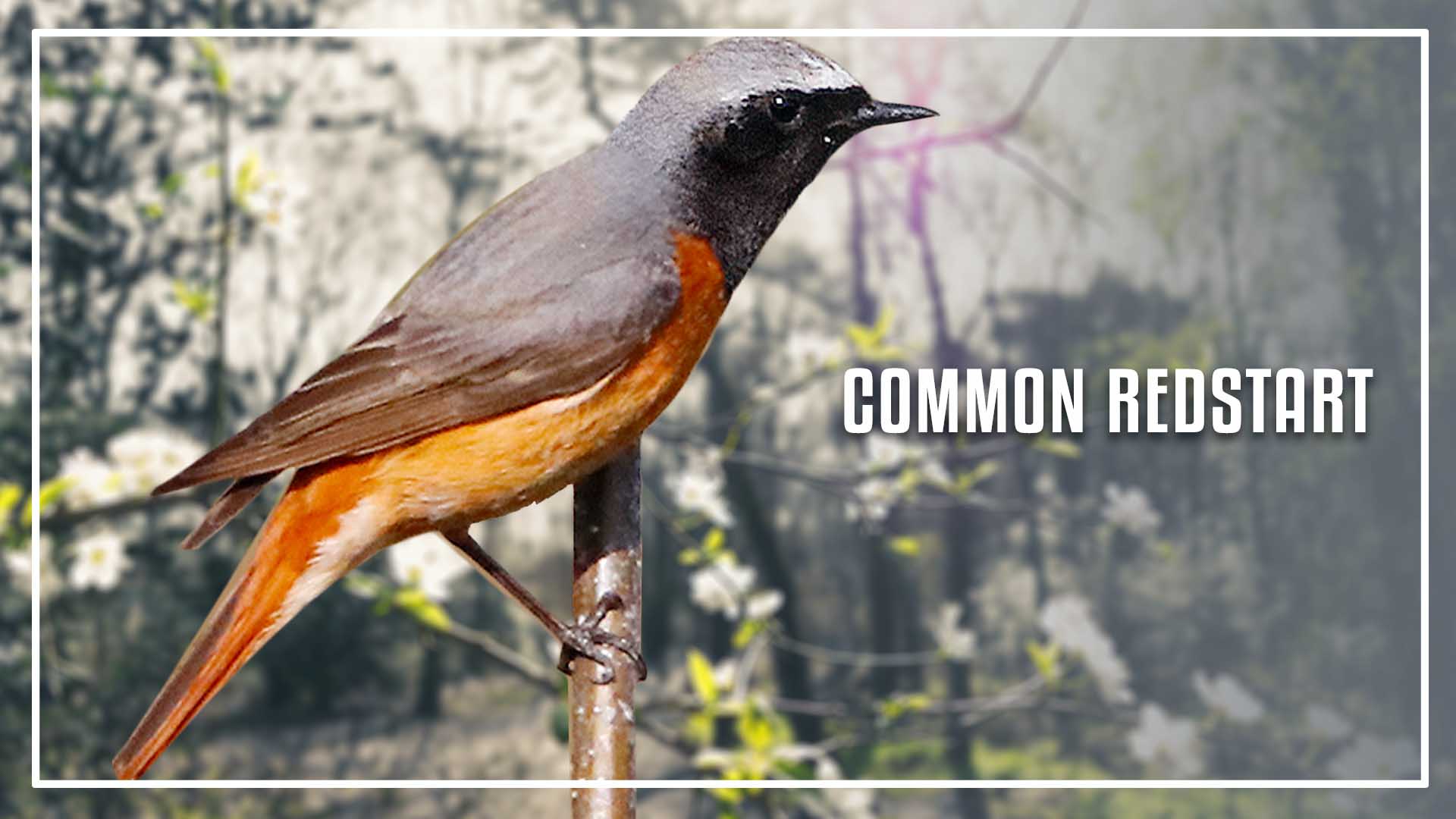
The male Common Redstart has a striking color pattern, with a bright orange-red tail and rump, and a grey head, back, and wings.
The face and throat are black, and there is a white patch on the forehead. The female has a similar color pattern, but with less intense colors, with a brownish-grey head, back, and wings, and a pale orange-red tail and rump.
The Common Redstart is a small songbird, measuring around 12-14 Centimeters (5-5.5 inches) in length from the tip of the beak to the tip of the tail.
Their wingspan is approximately 20-22 Centimeters (8-9 inches) and they weigh around 12-16 grams (0.4-0.6 ounces).
